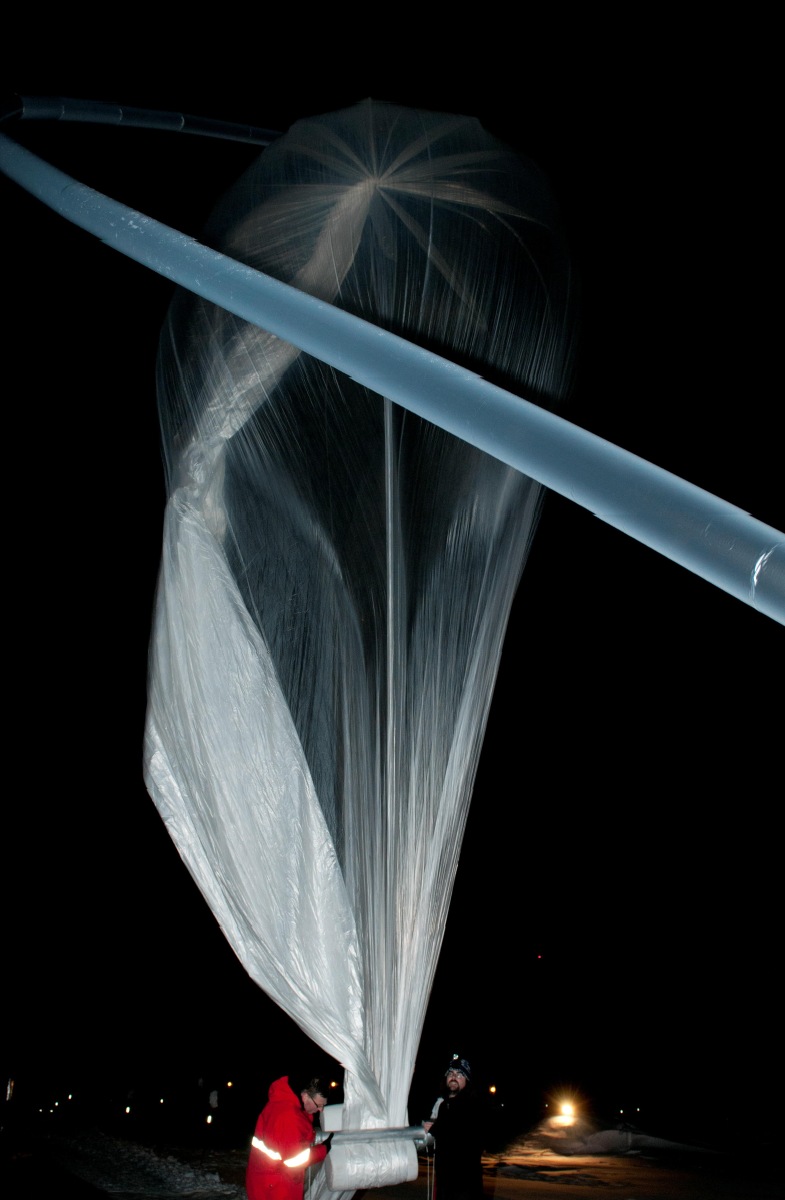Purpose of the flight and payload description
The aim of the POP (Polar Observation Platform) initiative was to demonstrate the feasibility of long-duration stratospheric-balloon flights during the polar night in the Arctic. The effort was carried out through a cooperation between the University ''la Sapienza" of Rome and the ISTAR-Group (International Science Technology and Research) from the United States. Balloons were launched with the support of the Consiglio Nazionale delle Ricerche that offered the facilities of the Dirigible Italia base in Ny Alesund, Spitzbergen Island in Svalbard.
Objectives of the 2012 campaign were to test a new electronic components and telemetry system designed and built by the Physics department at the University of Rome La Sapienza. A secundary goal was to observe, in real time, the polar winter night sky stratospheric wind trajectories for planning future campaigns with heavy lift Long Duration Balloons (LDB) during the polar night. Final objective was to test new flight hardware developed by ISTAR. The winter flight offers to the science teams observations without the solar radiation experienced during the summer months.
The payload carried out by the balloon was a simple battery powered GPS and transmitter that delivered time, temperature, speed, heading, and altitude through an IRIDIUM-based communication system.
Details of the balloon flight
Balloon launched on: 1/17/2012 at 18:55 utc
Launch site: Ny-Alesund, Svalbard, Norway
Balloon launched by: ISTAR (International Science Technology And Research)
Balloon manufacturer/size/composition: Zero Pressure Balloon Near Space Corporation - 3791 m3
End of flight (L for landing time, W for last contact, otherwise termination time): 1/17/2012
Balloon flight duration (F: time at float only, otherwise total flight time in d:days / h:hours or m:minutes - ): 2 h
Landing site: In a Glacier at 79º 03' N 12º 22' E. Svalbard Archipelago
Payload weight: 38 kg
The balloon was launched from Ny Alesund, Spitzbergen Island on January 17, 2012 at 18:55 utc in perfect conditions. The balloon ascended nominally but then began to descend after reaching an altitude of 15 km. After a few minutes the balloon landed on a glacier approximately 79º 00' 46" N 15º 22' 03.66" E. Recovery of the balloon and payload was delayed to the moment when the daylight returned to the far north. The failure was probably due to the extreme cold (-68 C) and sheer winds of the troposphere.
External references
- Dalla notte artica alla prima luce del Big Bang Media INAF, 1/31/2012
- Dalla notte artica le origini dell'Universo MeteoWeb, 1/27/2012
- I palloni stratosferici italiani dalla base dove parti Nobile Corriere de la Sera, Scienze, 2/10/2012
- ISTAR group launched balloons from Svalbard Stratocat website
11303If you consider this website interesting or useful, you can help me to keep it up and running with a small donation to cover the operational costs. Just the equivalent of the price of a cup of coffee helps a lot.


